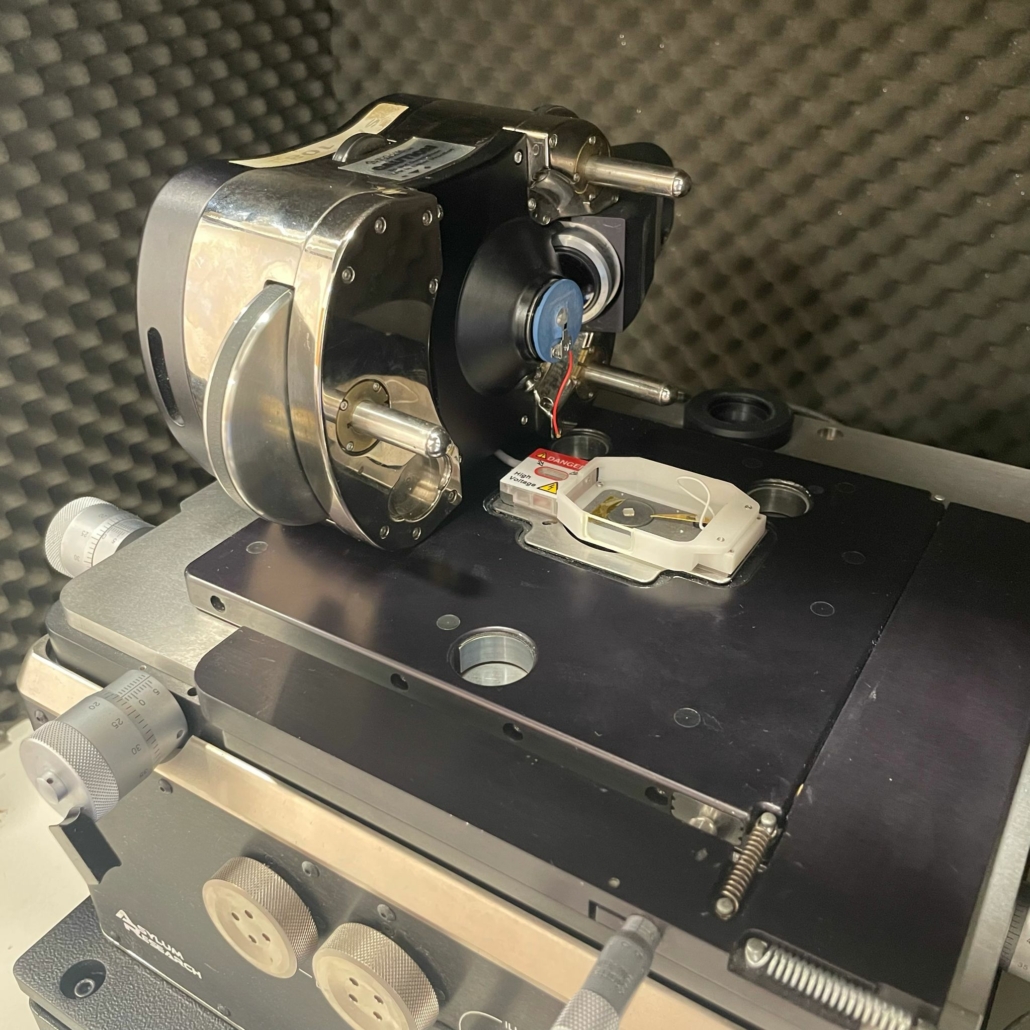Atomic Force Microscope (AFM)
About
An AFM works by quasi-physically probing a surface, allowing to generate not only topography images with xyz quantitative data, but also to obtain nanoscale information on properties such as mechanical or electrical behaviour.
Description
Asylum Research MFP-3D Classic (Oxford Instruments) – https://afm.oxinst.com/
The MFP-3D Classic AFM by Asylum Research is an instrument designed to characterize different surface properties at the nanoscale, possibly simultaneously. By employing a sharp probe that scans the surface of a sample at extremely close distances, the AFM can generate high-resolution topographical images by observing the variations in force gradients between sample and probe atoms, which can then be overlaid with maps of other properties, such as conductivity or contact potential difference, allowing to correlate between both.
Nanoscale phenomena such as conductivity, magnetic behaviour, piezoresponse or elasticity can be quantified. This versatility coupled with its non-destructive sample preparation makes it a trustworthy tool in multidisciplinary research, with contributions on fields ranging from nanotechnology and material engineering to molecular biology or tissue engineering.
Technical specifications:
Resolution at optimal conditions is <1 nm in the xy axis and ~100 pm in z axis.
For best results, samples must be 3x3x0.5 cm at most and have a smooth surface (<100 nm RMS roughness). A back contact is mandatory for CAFM experiments.
Sample preparation is normally straightforward or not necessary with most samples, allowing characterization of a sample that has been subjected to few or none chemical/physical altering treatments.
This system can be operated in both dynamic modes (tapping/oscillation) and contact mode, besides offering several electrical nanocharacterization possibilities: conductive AFM (CAFM), kelvin probe force microscopy (KPFM), piezoresponse force microscopy (PFM) and electrostatic force microscopy (EFM) – both in imaging and spectroscopy mode (1-dimension).
Spectroscopic experiments can be used to extract IV curves with nanometric precision or to generate force-displacement curves that uncover nanomechanical properties.
It is also possible to operate the AFM in liquid media (water or buffer), allowing characterization of structures dependent on media properties.
Case study:
Maria is experimenting on a new thin film layer for her devices and she will study the effect of a doping concentration on device performance. She does not know if this new layer will mirror the roughness of the substrate layer, nor if it produces structures that can affect conductivity. With AFM, she can characterize her sample’s surface and overlay her topographical image with the CAFM channel, allowing her to precisely pinpoint the relationships between roughness, structure, and conductivity.
Optional:
CAFM: https://doi.org/10.1063/1.5042046
KPFM: https://doi.org/10.1021/acsnano.7b04762
Biomolecules: https://doi.org/10.1039/C9AN00319C
Nanomechanics: https://doi.org/10.1016/j.actbio.2013.02.044
Access Provider / Facilities






